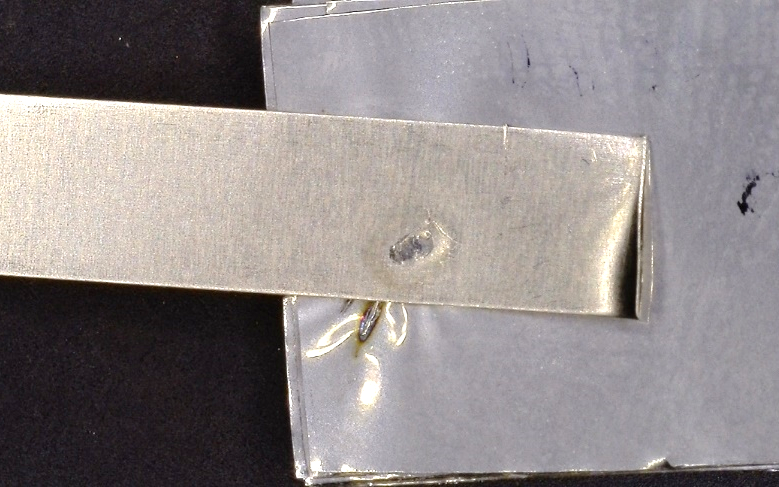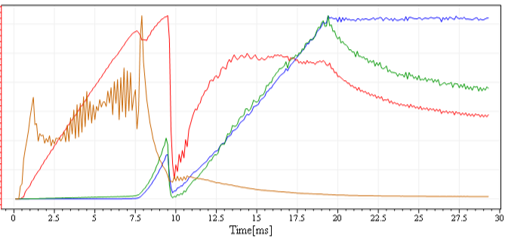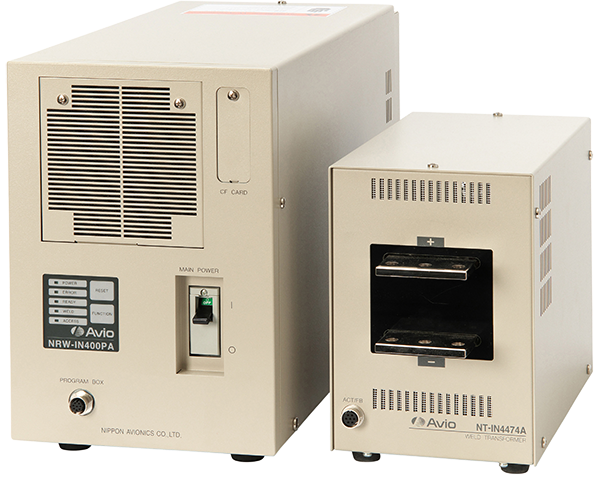Stainless steel foil/Nickel foil and Nickel tab joining for improved lithium-ion battery performance
- TOP
- Resistance Welding
- Applications of Resistance Welding
- Stainless steel foil/Nickel foil and Nickel tab joining for improved lithium-ion battery performance
Lithium-ion rechargeable batteries (LIBs) are required to achieve higher energy density and input/output performance as the demand for electrification increases. In this context, high-capacity anode materials such as silicon (Si) and tin (Sn) are being adopted instead of graphite as the anode active material. These materials undergo large volume changes during charging and discharging, causing stresses that result in changes in the shape of the current-collecting foil and loss of adhesion. Stainless steel and electrolytic nickel current-collecting foils with high mechanical strength are therefore attracting attention.
Resistance welding is suitable for joining stainless steel or electrolytic nickel current-collecting foil to tab leads, rather than ultrasonic metal joining, which is the conventional joining method for copper current-collecting foil. However, when many layers of current-collecting foil are stacked, stable joining cannot be obtained.
The NRW-IN400PA inverter welder solves this challenge.

Stable joining is difficult with a constant-current-controlled welding power supply.
To improve the performance of lithium-ion rechargeable batteries, stainless steel foils and electrolytic nickel foils are being used for the negative electrode on the charging side. A resistance welder is used to join the current collecting foil and nickel tab leads. However, with conventional constant-current-controlled resistance welding machines, stacking many current-collecting foils increases resistance, which causes spatter, expulsion and surface flash and sticking to the electrode, resulting in unstable joining.

The NRW-IN400PA's "Feedback Shift" function solves the issue
What is the feedback shift function?
The feedback shift function is a function that switches to the next welding condition when the set limit value is reached, based on changes in current, voltage, etc. inside the power supply.
The feedback shift function allows
Utilizing the feedback shift function, it is possible to energize the current collecting foil by taking into account variations in resistance due to distortion and surface conditions of the foil, thereby ensuring an appropriate current path.
The "Multi-stage welding function" of the NRW-IN400PA inverter-type resistance welding machine ensures stable joining.
The NRW-IN400PA can set welding conditions with the Triple-Pulse control and arbitrary waveform control functions. By switching welding conditions with the feedback shift function, it is possible to apply the current required for joining with the current path properly secured.

NRW-IN400PA provides stable bonding with minimal spatter, expulsion, and surface flash dust, and sticking of electrode


To improve the performance of lithium-ion rechargeable batteries, it is inevitable to change the anode current collection foil to stainless steel or electrolytic nickel. The Multi-stage Welding and Feedback Shift functions are effective for joining current-collecting foil and tabs.
The NRW-IN400PA inverter-type resistance welder is equipped with both functions to achieve highly stable joining.

For detailed specifications of the NRW-IN400PA inverter resistance welder, please check our website here.
Stainless steel foil/Nickel foil and Nickel tab joining for improved lithium-ion battery performance

| Joining Method | Resistance Welding |
|---|---|
| Processing Method | Metal Joining |
| End Products | Battery |
Sample test
We will be pleased to test your sample with our proposed joining method, and return it with a report.